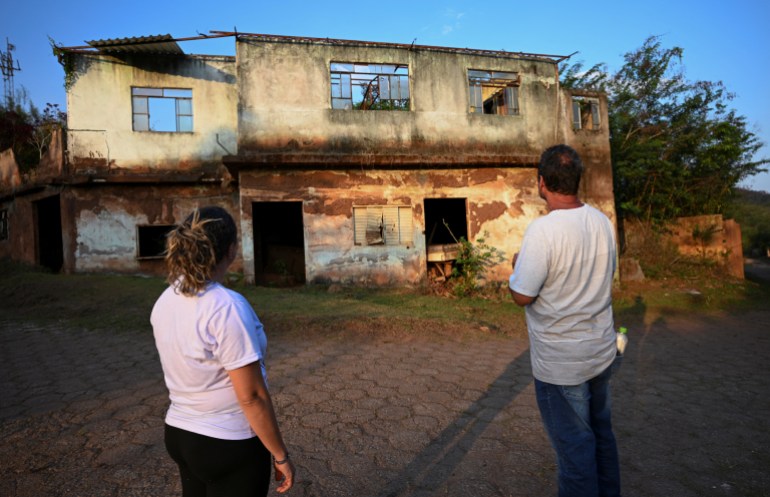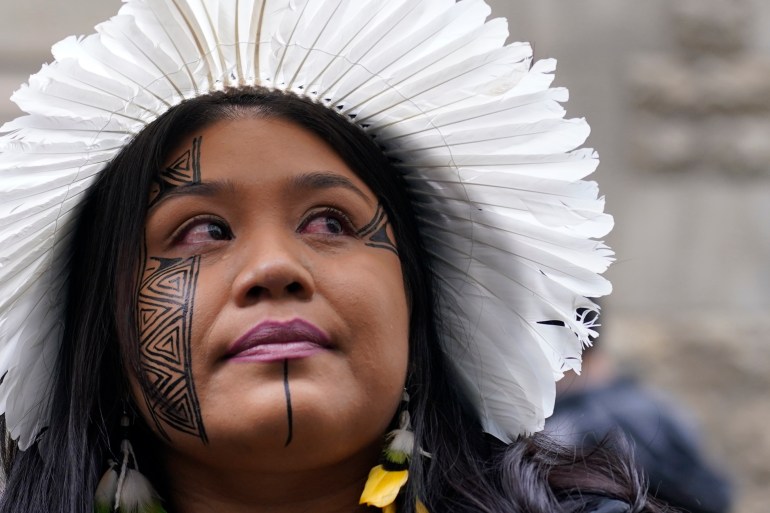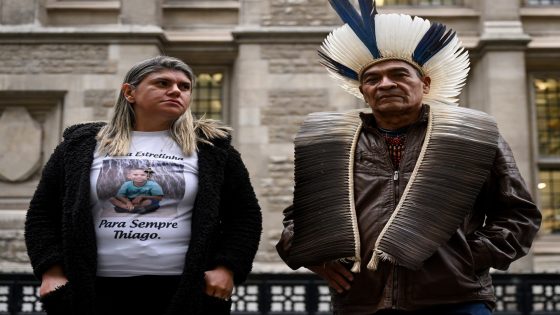Global mining giant BHP faces billions of dollars in potential damages payouts over Brazil’s worst environmental disaster nine years ago, as the first hearing in the much-delayed lawsuit opened in a London court on Monday.
On November 5, 2015, a tailings dam collapsed releasing iron ore sludge into the Rio Doce (Sweet River) in southeastern Brazil. The toxic waste contaminated the river water and damaged its ecosystem. The mining waste washed away the nearby Bento Rodrigues village, killing at least 19 people.
The class action lawsuit first filed in November 2018 seeks about $47bn in damages, making it the largest environmental payout ever, according to law firm Pogust Goodhead, which is representing the plaintiffs.
Here is what we know about the incident and the lawsuit.
What happened to the Mariana dam?
The Mariana dam, also known as the Fundao dam, which stored nearly 50 million cubic metres of iron ore sludge, collapsed on November 5, 2015, washing away the Bento Rodrigues village, which now resembles a ghost town.
The dam was operated by Brazilian mining firm Samarco, in which BHP is a shareholder.
The toxic sludge devastated and contaminated fisheries and forests. Hundreds of Indigenous people living near the Doce River were left without clean drinking water. The toxic waste travelled as far as the Atlantic Ocean.
The Doce River, which is sacred to the Indigenous Krenak community, has still not fully recovered from the damage.
According to a study by the University of Ulster, the toxic waste damaged 660km (410 miles) of the river, and killed 14 tonnes of freshwater fish. Moreover, fishermen lost years of their catch.

What is the lawsuit against BHP?
The lawsuit filed by more than 600,000 people, according to official court documents, demands that Anglo-Australian mining company BHP pay adequate damages to the victims affected by the disaster.
In 2018, it was reported that internal documents from Samarco, dated six months before the dam collapse, showed that the company knew about the risks associated with a potential dam collapse in the Minas Gerais state.
BHP owns 50 percent of Samarco, which operated the iron ore mine where the dam ruptured. Brazilian iron producer Vale is also a shareholder in Samarco.
“BHP is a polluter and must therefore pay,” lawyer Alain Choo Choy said in written submissions.
A class-action lawsuit refers to a lawsuit brought by an individual or a group on behalf of a larger group. In the case of the dam collapse, there were multiple victims and the people bringing the lawsuit represent these victims.
Class-action lawsuits are relatively common in cases of environmental damage. A recent example of this was in late June this year when a group of children in Hawaii won a case against the Hawaii Department of Transportation, where they had alleged that the body violated their constitutional right to a clean environment by implementing policies that create emissions. The children were speaking on behalf of the overall youth in Hawaii. The department agreed to enforce decarbonisation policies in Hawaii’s transport sector.
Why was the case filed in a London court?
BHP and Vale have negotiated a settlement with authorities in Brazil along with Samarco, according to media reports.
As a result of these negotiations, in 2016, BHP alongside Vale and Samarco established the Renova Foundation for the reparation of damages caused by the dam collapse.
According to a news release published by BHP on October 19, $7.9bn has already been paid between 2016 and September 2024, about $18bn is to be paid in instalments over 20 years and about $5.8bn will be paid in “additional performance obligations” by Samarco.
The Guardian reported in 2018 that a civil case was filed by those affected in a Brazilian court. However, since Brazil courts take a long time to reach a decision and there was a chance that compensation would be inadequate, the victims instead went to a London court.
Besides this, the lawsuit was filed in the UK because two of BHP’s legal entities were based in the UK at the time.
In written submissions, BHP lawyer Shaheed Fatima said that the plaintiff’s claim has “no basis”, saying BHP did not own or operate the dam and “had limited knowledge of the dam and no knowledge that its stability was compromised”.
A brief timeline of the legal case
Here is a brief timeline of how this lawsuit has progressed, and why the hearings are happening nine years later:
- November 5, 2018: More than 240,000 people and corporate entities, including 200 people from the Krenak communities, filed a lawsuit against BHP, Vale and Samarco at the High Court of Justice in London.
- April 2020: A UK judge postponed court proceedings because of COVID-19 restrictions, according to the London-headquartered research organisation Business and Human Rights Resource Centre.
- November 2020: The High Court dismissed the case, with the judge ruling that the case was an “abuse of the process of the court”.
- March 2021: The plaintiffs did not have luck at the Court of Appeals, whose judgement agreed that the case would be an abuse of court processes.
- July 2021: The appeals court reversed their earlier decision, and agreed to grant permission to appeal to avoid “real injustice”.
- July 2022: The appeals court ruled that English courts had jurisdiction to hear the case, especially since the compensation provided to the victims in Brazil was inadequate. The trial was set to begin in April 2024, but BHP requested for it to be postponed until mid-2025.
- March 2023: Another 500,000 people and organisations joined the plaintiffs.
- May 2023: A London court rejected BHP’s request for postponement, instead granting a five-month deferral until October 2024. The hearing in the much-delayed case started on October 21.






